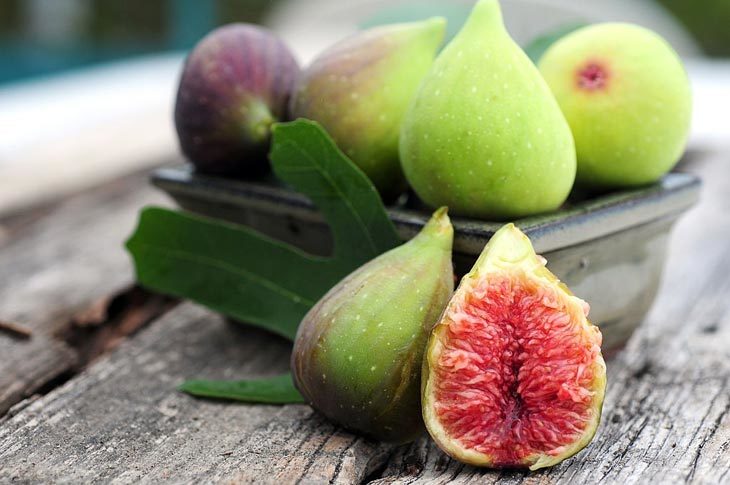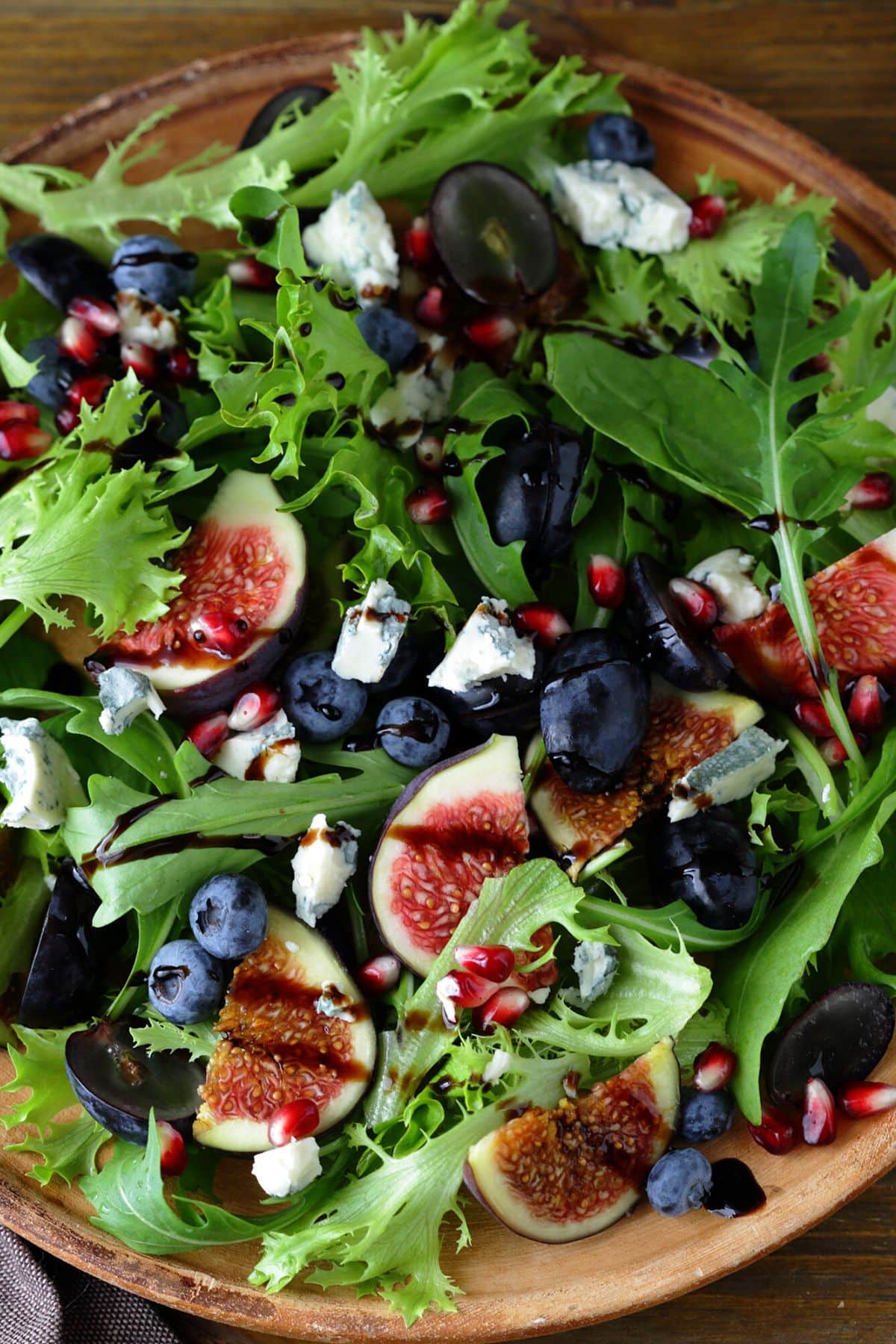Fresh figs are a seasonal delight. They are juicy, sweet, and decadent. You can bake with them, cook with them, use them in salads or smoothies or simply eat them. But, what happens if you can’t use them up before they go bad? Learn how to freeze fresh figs and how to use them once they’re frozen.
There’s nothing better than an artisanal charcuterie board stacked with choice meats, dairy-free or regular cheese, and fresh ripe figs; they’re the perfect way to balance a sharp cheddar cheese.
They are such a delicious fruit. Looks for them at the grocery store or the farmer’s market. Depending on where you live, you’ll probably see figs of different colors including green and dark purple.
Fig preserves are another favorite! You don’t have to add refined sugar to it; these fruits have such a lovely, natural honeyed sweetness that you can get away with making preserves without any added sugar.
Ancient Romans and Greeks saw the fig tree as a symbol of fertility and abundance, and early Olympic athletes used figs as training food due to their high sugar content.
And, did you know that figs are scientifically not considered as fruit? They are flowers turned inside out, and the fruits are the tiny soft seeds on the inside. No wonder figs have that delicate floral flavor.
And, just like edible flowers, fresh figs are rich in nutrients and low in calories. They can help with digestive and heart health and help manage blood sugar levels. The copper in figs can help improve metabolism and form blood cells and connective tissues. Vitamin B6 helps with how your body processes protein.
Add ¾ teaspoon powdered ascorbic acid to every 4 cups of figs or use lemon juice to keep the figs from changing color. Transfer the figs and simple syrup to an airtight, freezer-safe container with a label and date. When properly stored, frozen figs can last up to one year in the freezer.

What You’ll Need to Make This Recipe
You don’t need much to freeze a batch of ripe, tasty figs. Here is your basic equipment list:
You can use a paring knife or any other knife. Ripe figs have soft skins, so the knife doesn’t have to be very sharp.
The best way to flash-freeze fresh figs is with a large baking tray that fits into your freezer.
If you don’t have a suitable baking tray, you can use anything with a flat surface, for example, a serving tray or a cutting board.
The wax paper covers the baking tray before you place the figs on it. It makes it easier to move the frozen figs into freezer bags, and you can use it to place another layer of figs on top of the first one.
Try parchment paper or aluminum foil if you don’t have wax paper.
It’s easy to store frozen figs in zip-top freezer-friendly bags, but if you don’t have any at home, don’t worry! You can use any container to keep them in, as long as it’s airtight and is a freezer-safe container.

This recipe has one ingredient: figs. The tricky thing about figs is that they don’t ripen once you’ve picked them, and they don’t last very long!
Whether picking figs or shopping for them, make sure they’re ripe and plump. They should give a little when touching them but still be quite firm. If the figs are mushy or oozing, they’re overripe and won’t freeze well.
Overview of How to Freeze Fresh Figs
Wash the figs and pat them dry using paper towels. Cut the figs into halves or quarters.
Line a baking sheet with wax paper or parchment paper. Lay the fig pieces in a single layer on the baking sheet or flat surface.
Freeze the figs for 2 hours.
Transfer the frozen figs to a zip-top bag or airtight containers and store flat in the freezer until you are ready to use.

Figs will last several months in the freezer, but you should use them within 6-8 months maximum for best results.
So many different things! Frozen figs work particularly well in baked goods like bread, muffins, and pies. You can even chop them and stir it into the batter, fold it into the dough, or use it in a filling. They make some of the best smoothies and homemade ice creams and work well in sauces, jams, and preserves. Frozen figs cook and bake faster because the freezing process has already broken down the cell walls, so you’ll speed up the cooking process when you’re using the fruit from frozen instead of fresh.
Once you’ve frozen figs, they’ll lose their original texture and be much less firm. You can use them blended into a tangy vinaigrette over your salad, but they wouldn’t work as solid pieces.
No, you don’t! There is no need to blanch the figs, give them a lemon water bath, or dip them in sugar or syrup. If you don’t want them to lose color, you can squeeze a little lemon over them, but this is unnecessary. You can simply freeze them as is using the simple recipe below.
Freezing Figs
FAQ
Can you freeze figs for later use?
How do you know if figs are expired?
How long are jarred figs good for?
What is the best way to preserve figs?
